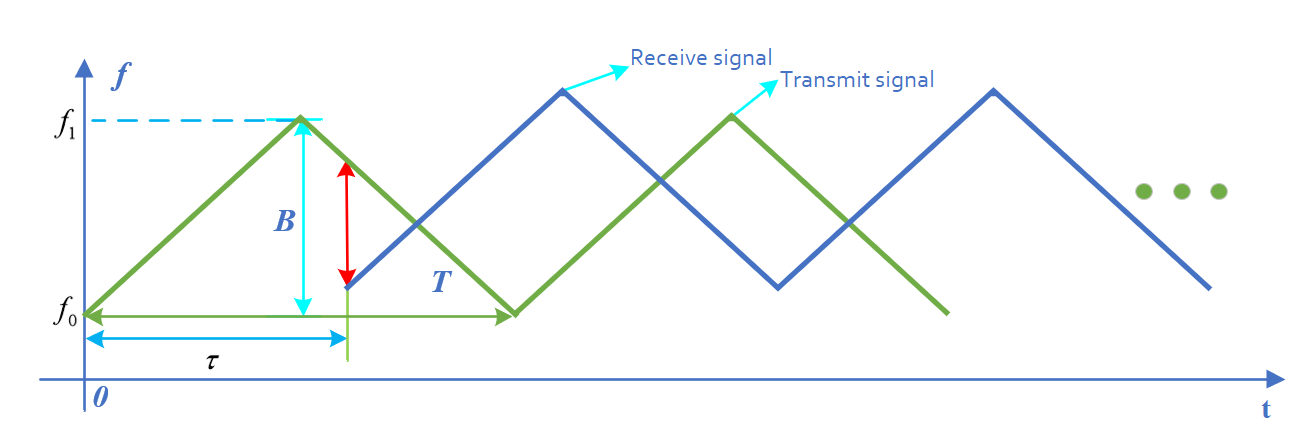Types of LiDAR - Ranging Method
2024-05-10
According to the ranging method, lidar can be divided into Time of Flight (TOF) ranging method, Frequency Modulated Continuous Wave (FMCW) ranging method, and triangulation ranging method. Among them, TOF and FMCW can achieve longer range measurements under outdoor sunlight ( 100~250m), which is the preferred solution for vehicle-mounted lidar.
TOF Ranging Method
TOF is currently the most mature and widely used distance measurement method. It measures distance based on the time it takes for light to reflect back. Specifically, it works by illuminating a target with a pulsed laser and measuring the properties of the reflected return signal. The width of the pulsed light can range from a few nanoseconds to a few microseconds.

The main components of TOF lidar include lasers, amplifiers, photoelectric converters, etc.
There are currently two types of TOF laser sources: 905nm and 1550nm. Normally, the detection distance of 905nm is 100-200m. Since being close to visible light has an impact on the human eye, it is difficult to increase the detection distance by increasing the power, resulting in a limited detection distance. The 1550nm detection distance can reach 250m and has better security. However, because the 1550nm receiver needs to use an indium gallium arsenic photodetector chip, the current cost is high.
FMCW Ranging Method
FMCW is a ranging method that modulates the frequency of light and obtains the distance of an object based on the frequency difference. The receiver adopts coherent detection, which can achieve higher detection distance, stronger anti-interference ability, and can directly detect the speed of objects and immediately distinguish between stationary objects, opposite and same-direction driving.

FMCW lidar mainly consists of laser, detector, coherent optical path and scanning component (usually OPA). FMCW light sources generally use 1550nm narrow linewidth lasers.
At present, TOF is the most widely used ranging method for lidar commercialization. By monitoring the time difference between laser emission and echo, the target distance is calculated based on the speed of light and the measured time difference. The biggest advantages of TOF are accurate detection, high cost performance, mature technology and fast response speed. The disadvantage is that the algorithm needs to resist interference and determine whether it is a false target based on the reflectivity, so there are higher requirements for the algorithm.
FMCW can determine the moving direction of the target based on the Doppler effect, has richer information, and has good anti-interference performance against ambient strong light and other lasers.
Overall, the ranging method will gradually switch from TOF to FMCW in the future, and the two ranging methods will coexist in different scenarios.







